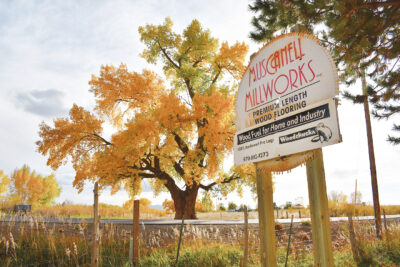Proposed “geolocation” requirement would discriminate against small nonindustrial operators
The new EU Anti Deforestation legislation, first presented as a draft in November of last year, is still passing through the EU law-making process, but this is happening more quickly than expected for such a complex, not to mention controversial law. In order to pass, the law must be agreed upon by consensus between both the EU Council of Ministers and the European Parliament. On June 28, the EU Council of Ministers – which represents the governments of all 27 EU Member States – did in fact agree on the draft text. It now only needs to be agreed by the European Parliament (which is usually more inclined than the Council to implement far-reaching environmental measures). A vote may take place as early as September.
In principle, this is just the sort of law that AHEC and the U.S. Hardwood sector would wish to support. It aims to remove products from deforested land from the EU market. Any form of deforestation is anathema to an industry such as ours that is built on the sustainable use of Hardwood forests and one which is most directly threatened by conversion of these same forests to other uses. The preamble to the legislation makes clear that the major driver of deforestation is not demand for wood products, but that “agricultural expansion drives 90 percent of global deforestation.” The law is, in theory, built on the concept of risk-based due diligence pioneered by AHEC in the Seneca Creek studies and which was the foundation of the EU Timber Regulation (EUTR). It extends this powerful concept to control trade beyond timber to include agricultural commodities most implicated in deforestation – beef, soy, palm oil, and coffee. The need to develop mechanisms to avoid discrimination against smaller producers and landowners is clearly stated in the preamble to the law. Unfortunately, in its current draft the law falls short of that lofty goal.
One aspect of this law in particular would be a major obstacle for U.S. Hardwood product exports to the EU as well as for many small non-industrial operators across the globe: a requirement to provide “geolocation” data for the specific “plot(s) of land” from where all regulated material (including wood) contained in products placed on the EU market is sourced.
In contrast to the current EU Timber Regulation, where products only need to be tracked beyond “country of harvest” where there is risk of illegality, Article 9 of the draft Regulation requires that operators collect information on “geolocation of all plots of land where the relevant commodities that the relevant product contains or has been made using were produced, as well as data or time range of production.” It goes on to note that “Where a relevant product contains or has been made with relevant commodities produced in different plots of land, the geolocation of all different plots of land shall be included.” A “plot of land” is defined in the draft Regulation as “within a single real-estate property.”
At first sight, this may seem reasonable. The need for traceability back to precise place of harvest might appear to be an essential part of any legislation designed to ensure no products from deforestation are placed on the market. Indeed, it should present no obstacle in those instances where individual harvests are sufficiently large, or sufficiently homogeneous, to pull together commercial consignments of the specific wood species and grades demanded by their EU customers. Providing data on the “plot of land” should certainly be an easy matter for the managers of industrial plantations – where each harvest produces a consistent species and grade of timber. The same is true for managers of state-owned concessions in boreal areas and the tropics, where forests are more diverse, but where each plot of land will be at least 1,000 hectares and sometimes extend to millions of hectares. Indeed, a prime example of who would benefit from such a system are large state-owned enterprises where the state also owns the timberland – such as Russia where “ownership” of millions of hectares of forestland are vested in one “single real estate property” – the Russian government.
As written, the requirements and definitions relating to geolocation have a strong potential for discrimination against products from smaller landowners, particularly when derived from diverse natural forests such as is the case in the U.S. Hardwood industry.
It is also important to understand that if implemented this law would have implications beyond just direct Hardwood exports to the EU. Countries such as Vietnam, India and Turkey that supply wood furniture to the EU would be required to provide the same geolocation data for their raw material supplies.
For more detailed information, on the homepage of the AHEC website (www.ahec.org) is a document with AHEC Comments on the regulation and its potential for discrimination, as well as what we believe to be relatively simple amendments to the EU text. AHEC is engaging with our colleagues in the European wood trade associations to organize a campaign to educate Members of the European Parliament on the real-world implications of adopting the legislation as it currently exists. We also encourage all U.S. exporters to communicate with their customers in Europe as well to ensure that they are aware of the implications and are in communication with their respective Members of the European Parliament. The Comments document on the AHEC website is designed to facilitate this discussion.
We are also working closely with Dana Cole and the Hardwood Federation here in D.C. to ensure that the U.S. government is also engaged in this process.








